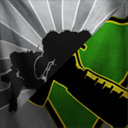As Valcrow has shared with the community, tolerances and understanding your 3d printer’s design constraints is a big part of a modeling project such as this. That being said, I hope it will be an interesting way to help myself learn the coursework more completely than through lecture and home work alone.
Down to the nitty gritty. This project will occur in several stages, the first is already underway.
- materials research – e.g. models, software constraints;
- extracting models
- conversion to autocad friendly, or at least visible geometry
- extracting models
- drafting (done at full scale – this is for educational purposes);
- establingshing actual size
- import reference material that will be useful and hopefully not resource prohibitive
- ….
- establingshing actual size
- scaled 3d model output to autodesk fusion 360
- layout of the construction/manufacturing blueprint that results from the scaled model and parts list; Stage 4 will be printing a prototype.
The programs I will use are:
- Noesis w/cry engine plug-in (MW:O Art Thread)
- Autodesk Autocad 2014: free to students here
- Autodesk Fusion 360: free to students/entrepreneurs/hobbyists here
- Autodesk FBX convertionhere
Heffey, of “What Does the Mech Say?” gets a shout out, one stop shopping (gleaning?) on how to get started with extracting game geometry and getting it converted. His MW:O Art Thread is a wealth of information for all things model extracting. I will be returning there frequently.
Heffey’s work got me set up with Noesis and the cry engine plugin to extract the geometry from game assets. Interestingly Noesis has a tool to extract geometry in an Autodesk friendly format (-ish) Autodesk FBX.
For those unfamiliar with autocad, it is an incredibly versatile piece of software but only ever does anything properly if you coax and prod it along in just the right way.
System resources are also at a premium, working with non-native geometry is something that can really slow down your work flow. To address this we turn again to Autodesk FBX, Autodesk has a utility dedicated to handling data like this here (free to autodesk 360 account holders – see fusion 360 for free account). In industry this tool is pretty important as it allows manufacturers to share 3d schematics across platforms, which as anyone who has been playing around with this will tell you, cross capability is nill(see reasons to use open source software). I have been fooling around with the FBX converter, which seems to maintain the detail of the geometry while in some/most cases reducing the file size.
There are several extensions supported directly for conversion:
- 3DS (*.3ds)
- Collada (*.dae)
- Drawing Exchange format (*.dxf)
- (*.Obj)
- (*.fbx)
Trying to get the most Autocad friendly model with the greatest amount of detail I have run some conversion tests.

First Rest: convert Noesis output to FBX 2013 binary encoding
Converting from Noesis .OBJ output to .FBX 2013:
The full “body” output of the Jenner is ~5.0mb, after converting to FBX the file is reduced in
size to 1.07mb.
Converting from Noesis .FBX to FBX 2013:
No file size change, Noesis uses version 7.3 of FBX (search for a change log, but who cares)
Second Rest: convert Noesis output to FBX 2013 binary encoding
Converting from Noesis .OBJ output to .FBX 2013:
The full “body” output of the Jenner is ~5.0mb, after converting to FBX the file is reduced in size to 4.14mb.
Converting from Noesis .FBX to FBX 2013:
The full “body” output of the Jenner is ~1.07mb, after converting to FBX 2013 the file is increased in size to 4.14mb. Ascii requires more space to encode in? Not sure how this will affect model detail, but the amount of data required to draw the geometry will affect performance in autocad for certain.

Results
In Autocad there are no differences in the number or faces in the Jenner. They both have about 16500 faces. SO outgoes the ascii, as it’s a larger file. The goal was to determine if autocad interprets the geometry differently depending on file types. I have not really got much further than this in the process yet.
That gets you to the jenner as a block in autocad, it has to be imported through the insert ribbon and can be placed as a Block, or simply in the model space. I have not determined if the Flip UV’s revelation has any effect on model orientation or impact on my project, but after remembering this, I made sure to re-create my exports with this turned on in Noesis.
Closing thoughts and what is next
I have a few photos of the jenner looking pretty in model space. Though at this point, the model is only geometry, not material or object. I can however break the block (auto cad drawing jargon) to have selectable faces and the ability to track new lines over the original work.
Next steps are to investigate one of several ways to import the geometry to facilitate scaling. I also need to decide exactly what true shape and size are for a JR7-D. This is sort of trivial in most cases, but the end goal is a draft sheet at C or D size that will have accurate annotations and an isometric view. Later comes the scaled 3d print.


Playing around with my rediculous display setup to take a picture of some candy
-----All copyrighted or licensed materials are presented for an education purpose only-----
*edit for missing formatting
Edited by Archtype, 08 November 2013 - 04:08 PM.
































